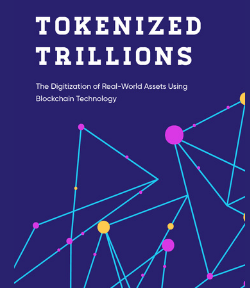
Why Bitcoin is Poised for Growth Amid Global Uncertainty
Why the World’s Problems Make a Strong Case for Bitcoin.
As 2024 unfolds, the world seems to be lurching from one crisis to the next. From geopolitical flare-ups in the Middle East to supply chain issues and political uncertainty in the U.S., the cracks in the global financial system are becoming too big to ignore. For many, these disruptions feel like distant headlines, but the impacts are real and tangible – prices are rising, currencies are weakening, and trust in traditional financial institutions is eroding. At the heart of this seismic shift is the quiet but powerful ascent of Bitcoin and the broader crypto market.
Cracks in the Global Financial System
Let’s start with the basics: the world is drowning in debt. The U.S. alone is staring down the barrel of $35 trillion in national debt – a number so large it’s hard to comprehend. To put it in perspective, that’s more than the GDP of the entire European Union. And this isn’t just an American problem. Europe, Japan, and even emerging economies are buried under their own mountains of debt. Governments, locked into unsustainable fiscal policies, have resorted to printing money to keep their economies afloat, leading to inflation and currency debasement.
For the average person, this means your money is losing value. Whether you’re trying to save for retirement, pay off a mortgage, or just get by day-to-day, you’re working with a currency that’s worth less every year. Central banks – whether it’s the Federal Reserve, the ECB, or the Bank of Japan – are in a bind. They need to keep printing money to cover their debts, but the more they print, the more they devalue the currency. This is where Bitcoin enters the conversation.

Unlike fiat currencies, Bitcoin is finite. There will only ever be 21 million Bitcoins in existence, making it a deflationary asset in an inflationary world. It’s a concept that’s simple yet profound: as central banks continue to devalue traditional currencies, Bitcoin’s scarcity becomes more valuable. The stock-to-flow model for example, which measures Bitcoin’s scarcity relative to its production rate, continues to show that as the supply diminishes, the price should rise.
Here’s where things get personal. We’re all feeling the pinch of rising prices and uncertain futures. The inflation we see on grocery bills or the rising cost of rent isn’t just a blip – it’s the direct result of those macroeconomic forces we mentioned. But humans don’t always act rationally in the face of uncertainty. Behavioral economics tells us that in times of fear, people look for safe havens, something to protect what they’ve worked hard to build.
Historically, that safe haven was gold. But today, we’re living in an increasingly digital world where the rules of finance are changing. Bitcoin is becoming the “digital gold” of our time. The psychology driving this shift is powerful. It’s not just about the numbers – it’s about trust. Trust in governments, trust in traditional financial institutions, and trust in the value of fiat currency is eroding. This erosion creates a behavioral shift where individuals, increasingly distrustful of traditional assets, look to Bitcoin as a store of value.
We saw this play out dramatically when Bitcoin ETFs were finally approved by U.S. regulators. The rush of institutional money was staggering – over $50 billion flowed into Bitcoin ETFs within months. This isn’t just retail investors trading crypto; it’s big money recognizing that Bitcoin is here to stay. For the first time, some financial advisors are beginning to recommend Bitcoin to their clients. And when that happens, it’s not just about speculation – it’s about a fundamental shift in how people view wealth and value.
Geopolitical Tensions and Bitcoin’s Global Appeal
Zooming out, we see a world increasingly defined by conflict and instability. The tensions in the Middle East are simmering, threatening to destabilize global oil markets and exacerbate inflation. In addition, the U.S. election looms large, with the country more politically divided than ever on many issues including fiscal policy, taxation, and regulation – all of which will impact financial markets. Historically, election years introduce volatility, as businesses and investors hedge their bets on future policy decisions.
But here’s the kicker: no matter who wins, the fundamental problems of debt, inflation, and fiscal mismanagement aren’t going away. If anything, a government looking to stimulate the economy will likely print more money, further debasing the dollar. The Federal Reserve has already signaled it may cut rates to avoid a recession, which could weaken the dollar even further. When fiat currencies are under pressure, Bitcoin becomes even more attractive as a hedge.
And on top of all this, the world’s strongest economy is now grappling with potential supply chain disruptions caused by the port workers strike in addition to global pandemic aftershocks.
When the world feels unstable, investors naturally seek safe havens. Traditionally, that has meant gold, U.S. Treasuries, or even the Swiss franc. But Bitcoin’s borderless, decentralized nature makes it an attractive alternative. In countries like Venezuela, Argentina, or Lebanon, where currencies have collapsed, Bitcoin has become a lifeline – an escape from hyperinflation and capital controls. Bitcoin’s unique advantage is that it’s beyond the reach of any single government. It’s decentralized, meaning no central authority can seize, freeze, or manipulate it. In regions where authoritarian regimes impose capital controls or inflation spirals out of control, Bitcoin offers a way out – a means of preserving wealth in a chaotic world.
Bitcoin’s Growing Legitimacy and the Metrics That Matter
One of the strongest arguments for Bitcoin’s future value lies in its growing legitimacy. The approval of spot Bitcoin ETFs is a watershed moment that signals Bitcoin’s integration into the traditional financial system.
Following the April 2024 halving, the number of new Bitcoins entering the market has been cut in half, driving up scarcity while demand remains robust. Historically, each halving has been followed by a significant price surge, and early indicators suggest that this time will be no different. Analysts predict that Bitcoin could reach anywhere from $270,000 to $450,000 in the next few years if previous cycles are any indication.
But it’s not just about price speculation. Bitcoin’s integration into financial markets provides liquidity and stability that makes it an even more attractive option for institutional investors. Its decentralized nature, scarcity, and growing institutional acceptance make it uniquely suited to thrive in this environment. As governments around the world struggle to maintain control of their currencies and economies, Bitcoin offers an alternative that’s not just a hedge against inflation but a fundamental rethinking of what money and value can be in the 21st century. For those paying attention, the case for Bitcoin has never been stronger. Buy Bitcoin!






